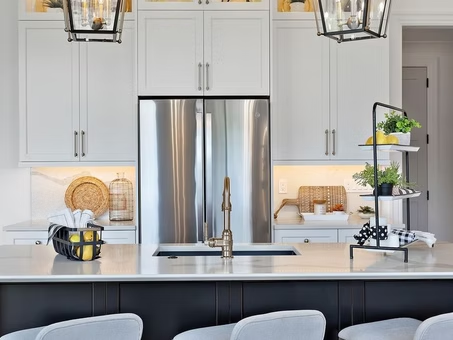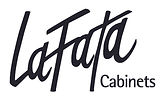Essential Guide to Kitchen Remodel Best Practices for Global Buyers
As the heart of the home, the kitchen holds significant value for homeowners and potential buyers alike. According to the National Association of Realtors, a well-executed kitchen remodel can yield a return on investment of up to 75%, making it one of the most lucrative renovations. With an increasing number of global buyers seeking properties with modern and functional kitchens, understanding best practices in kitchen remodeling has never been more crucial. Recent trends indicate that 79% of home buyers place a high emphasis on the kitchen, with features like ample storage, open layouts, and updated appliances topping their wish lists.
In light of these insights, this essential guide aims to equip buyers with the knowledge necessary to navigate the complex world of kitchen remodels. By focusing on key aspects such as design trends, budgeting, and materials, we will explore how global buyers can maximize their renovation efforts to attract future buyers while enjoying their dream kitchen. As the demand for stylish and functional kitchens continues to rise, implementing best practices will not only enhance the living experience but also significantly impact property value in a competitive market.

Understanding Global Trends in Kitchen Remodeling
As kitchen remodeling evolves, global buyers are increasingly influenced by diverse trends that reflect cultural preferences and technological innovations. One significant trend is the integration of smart technology into kitchen designs. From smart refrigerators that track inventory to touchless faucets that promote hygiene, the modern kitchen is becoming not just a cooking space but a hub for efficiency and convenience. This shift appeals to buyers worldwide who look for functionality and ease of use, particularly in bustling households. Another emerging trend is the emphasis on sustainable materials and practices. Global buyers are becoming more eco-conscious, seeking out options such as bamboo cabinetry, recycled countertops, and energy-efficient appliances. This focus on sustainability not only caters to environmental concerns but also aligns with a growing desire for aesthetic appeal, marrying beauty with responsibility. Each region brings its own materials and styles to the forefront, creating a rich tapestry of choices that reflect both local and global influences. Cultural aesthetics also play a vital role in kitchen remodeling trends around the world. For instance, Scandinavian designs often feature minimalistic layouts with a focus on light and functionality, while Mediterranean kitchens celebrate warmth with vibrant colors and earthy textures. Understanding these global stylistic variations allows buyers to create kitchens that resonate with their personal tastes while also embracing elements from different cultures, resulting in a space that is truly unique and reflective of a globalized world.

Key Considerations for Budgeting Your Kitchen Remodel
When budgeting for a kitchen remodel, it’s crucial to have a clear understanding of the costs involved, as these can easily spiral out of control without a strategic plan. According to the National Kitchen & Bath Association (NKBA), kitchen remodels typically yield a return on investment (ROI) of around 60% to 80%. This emphasizes the importance of spending wisely and prioritizing renovations that add both aesthetic and functional value to your kitchen.
Start by determining your kitchen's current value and the maximum budget you can allocate for the remodel. A 2021 Remodeling magazine report highlighted that the average major kitchen remodel costs about $75,000, while minor upgrades can range from $20,000 to $30,000. It's crucial to consider the scope of your remodel carefully; for example, cabinet replacements often account for about 30% of the total cost, making it one of the most significant areas to focus on when redesigning your kitchen.
Moreover, it's essential to create a contingency fund for unexpected expenses, as approximately 20% of renovation projects exceed budget due to unforeseen issues. This could include structural changes, plumbing modifications, or electrical upgrades. By understanding these financial dynamics and aligning them with your overall goals, you can ensure a smoother remodeling process that ultimately enhances both your kitchen's functionality and market value.

Selecting Sustainable Materials for Your Kitchen Upgrade
As global buyers embark on kitchen remodels, selecting sustainable materials plays a crucial role in both environmental conservation and enhancing property value. According to a report by the World Green Building Council, buildings that utilize sustainable materials have been shown to reduce energy consumption by as much as 30%. For kitchen upgrades, this means opting for eco-friendly countertops, cabinetry, and flooring that not only enhance aesthetics but also significantly lower the carbon footprint.
When considering materials, reclaimed wood is a popular choice that exemplifies sustainability. It not only reduces deforestation pressures but also brings a unique character to the kitchen. A survey from the National Kitchen and Bath Association shows that nearly 60% of homeowners value the use of sustainable materials in their remodeling projects. Beyond aesthetics, sustainable choices like bamboo and recycled glass can provide durability against wear and tear while maintaining a commitment to environmental stewardship.
Additionally, certifications such as the Forest Stewardship Council (FSC) for wood products and the Cradle to Cradle certification for various materials can guide buyers in making informed decisions. These certifications ensure that the products meet strict environmental and social criteria. As the demand for sustainable living grows, incorporating these practices into kitchen remodels not only supports a healthier planet but also aligns with the increasing consumer preference for eco-conscious design.

Essential Design Elements for an Efficient Kitchen Layout
An efficient kitchen layout is vital for both functionality and aesthetic appeal. According to the National Kitchen and Bath Association (NKBA), an optimized kitchen space should prioritize three essential elements: the work triangle, easy movement, and effective storage solutions. The work triangle—consisting of the sink, stove, and refrigerator—should ideally form a triangle with no side shorter than 4 feet and no longer than 9 feet, facilitating smooth workflow for daily tasks.
Another key aspect of an efficient kitchen layout is the inclusion of ample countertop space. The American Institute of Architects (AIA) reports that 90% of homeowners value generous countertops, as they significantly enhance usability during meal preparation and other kitchen activities. Consider incorporating multiple areas for prep work, cooking, and dining to maximize this vital feature. Additionally, open shelving or strategically placed cabinets can offer both storage and accessibility, making it easier for users to find and utilize kitchen tools and ingredients.
Moreover, an efficient layout should accommodate the needs of the household. According to a survey by Houzz, 63% of homeowners prioritize a kitchen layout that allows for family interaction, emphasizing the importance of inclusion in design. Features such as an island can serve dual purposes—providing additional prep space while also acting as a social hub for family and friends. By integrating these essential design elements, global buyers can ensure that their kitchen remodel not only meets functional needs but also enhances the overall living experience.
Navigating Local Regulations and Permits for Renovations
When embarking on a kitchen remodel, understanding local regulations and permits is crucial for global buyers. Each region has its specific building codes and zoning laws that must be adhered to, making it essential to conduct thorough research before starting any renovation project. Familiarizing yourself with these regulations can help prevent costly delays and potential legal issues down the line. Whether you're updating plumbing, electrical systems, or structural elements, ensuring compliance with local laws should be your first step.
Navigating the permit process can be daunting, but it is manageable with the right approach. Start by visiting your local building department’s website, which typically provides detailed information on necessary permits and associated fees. Many municipalities offer online applications, making it easier to submit your plans and receive feedback. Some areas may also require inspections at different stages of the renovation, so being prepared for these visits can smooth the process significantly. If you're uncertain about the requirements, consider hiring a local contractor who is familiar with the regulations, as their expertise can save you time and stress.
Lastly, don't overlook the importance of engaging with your community. Neighbors may have valuable insights about the renovation process in your area. Additionally, participating in local forums or homeowner groups can provide access to resources and recommendations regarding contractors and best practices. By being proactive and informed, you not only ensure compliance with local laws but also enhance your kitchen remodel experience.


Fall into Function: How LaFata Cabinets Prepares Your Kitchen for the Cozy Season


Back-to-School Kitchen Refresh: How LaFata Cabinets Can Help You Stay Organized This Fall



